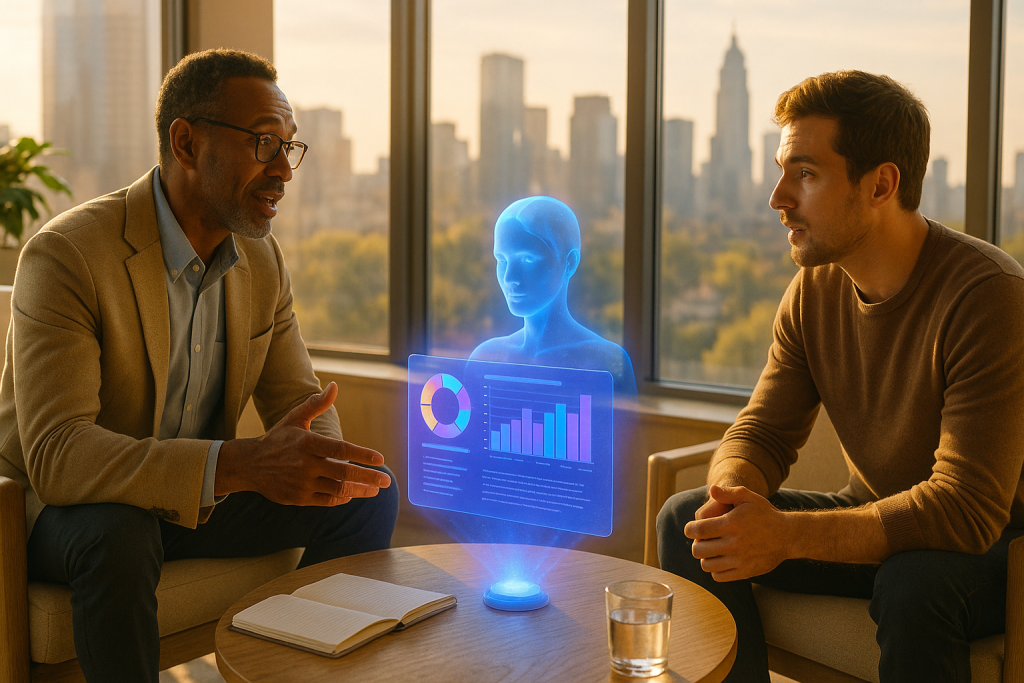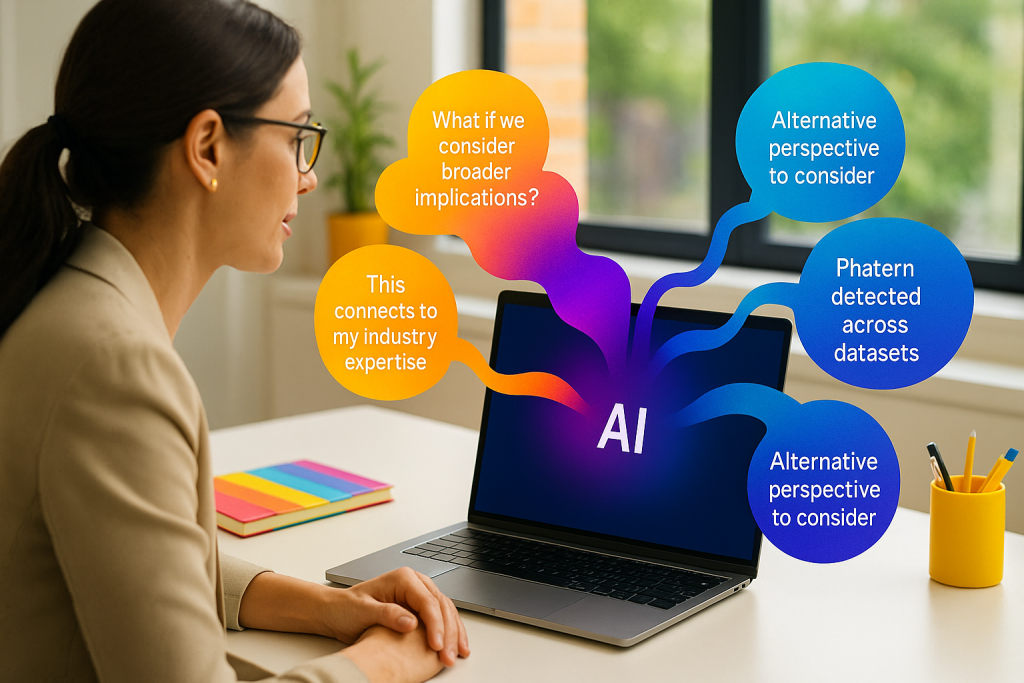
How AI Can Complement Traditional Life Coaching: The Best of Both Worlds
In today’s rapidly evolving digital landscape, artificial intelligence has made remarkable strides in numerous fields—including personal development and coaching. But does this mean human life coaches are becoming obsolete? Far from it. Instead, we’re witnessing the emergence of a powerful synergy where AI and traditional coaching complement each other, creating opportunities for deeper growth and more accessible support.
The Human Touch: What Traditional Life Coaching Offers
Traditional life coaching brings irreplaceable human elements to the personal development journey:
Emotional intelligence and empathy. Human coaches excel at reading subtle emotional cues, understanding the nuances of personal struggles, and responding with genuine empathy. They can sense when a client is holding back or when there’s more beneath the surface of what’s being said.
Intuitive guidance. Experienced coaches often rely on intuition developed through years of practice—knowing when to push clients outside their comfort zones and when to offer compassion instead of challenges.
Relational accountability. The coach-client relationship itself becomes a powerful motivator. Many clients report that they follow through on commitments partly because they don’t want to disappoint their coach who believes in them.
Customized approaches. Skilled coaches adapt their methodologies based on the client’s unique personality, learning style, and specific life circumstances.
The AI Advantage: New Dimensions in Coaching
AI coaching tools bring their own distinct strengths to the table:
24/7 availability. Unlike human coaches who need rest and have limited availability, AI coaching platforms can offer support at any hour—perfect for those midnight moments of inspiration or crisis.
Judgment-free space. Some clients feel more comfortable sharing certain struggles or thoughts with an AI that won’t judge them, especially in the early stages of addressing sensitive issues.
Data-driven insights. AI can track patterns in behavior, mood, and progress over time with remarkable precision, spotting trends that might be missed in weekly human coaching sessions.
Affordability and accessibility. While traditional coaching remains financially out of reach for many, AI tools can democratize access to basic coaching support at a fraction of the cost.
The Best of Both Worlds: An Integrated Approach
Rather than viewing AI and human coaching as competitors, forward-thinking practitioners are developing integrated models that leverage the strengths of both:
AI for daily support, humans for breakthrough moments. Many clients benefit from having AI tools for daily check-ins, habit tracking, and routine exercises, while reserving human coaching sessions for deeper work, strategy development, and navigating complex emotional territory.
Data-informed human coaching. Imagine arriving at your coaching session where your coach has already reviewed the patterns identified by your AI coaching tool—allowing for more targeted and efficient use of your time together.
Scaling personalized support. Coaches who embrace AI can extend their reach, supporting more clients by delegating routine aspects of coaching while focusing their human attention where it adds the most unique value.
Progressive autonomy. The combination can create an effective pathway from high-support to self-sufficiency—starting with regular human coaching, transitioning to a mix of human and AI support, and eventually using primarily AI tools with occasional human check-ins.
Real-World Applications
This integrated approach is already showing promise in several domains:
Career transitions. Clients use AI tools to explore potential career paths, practice interview questions, and maintain daily motivation, while human coaches help navigate the emotional journey and develop personalized strategies.
Health and wellness. AI trackers monitor habits and provide regular reminders, while human coaches help clients understand their deeper relationship with food, exercise, or self-care.
Productivity and business coaching. AI tools excel at tracking metrics and providing accountability, while human coaches help entrepreneurs align their business decisions with their values and vision.
Getting Started With an Integrated Approach
If you’re interested in exploring this best-of-both-worlds approach:
- Begin by clarifying your goals and the areas where you feel you need the most support
- Research AI coaching tools designed for your specific needs
- Find a human coach who is open to incorporating technology into their practice
- Create a clear plan for how the human and AI elements will complement each other
- Regularly evaluate what’s working and adjust your approach accordingly
The future of coaching isn’t about choosing between human connection and technological advancement—it’s about thoughtfully integrating both to create more effective, accessible, and personalized growth experiences. By embracing the strengths of both AI and traditional coaching, we can truly experience the best of both worlds.
Conclusion
As AI continues to evolve, the partnership between human coaches and intelligent technology will only grow more sophisticated. The coaches who thrive will be those who view AI not as a threat but as a powerful ally that allows them to focus on what humans do best—connecting deeply, inspiring growth, and bringing wisdom and perspective that comes uniquely from human experience.
The winning combination isn’t human or AI—it’s human and AI, working together to unlock new possibilities for personal transformation.
